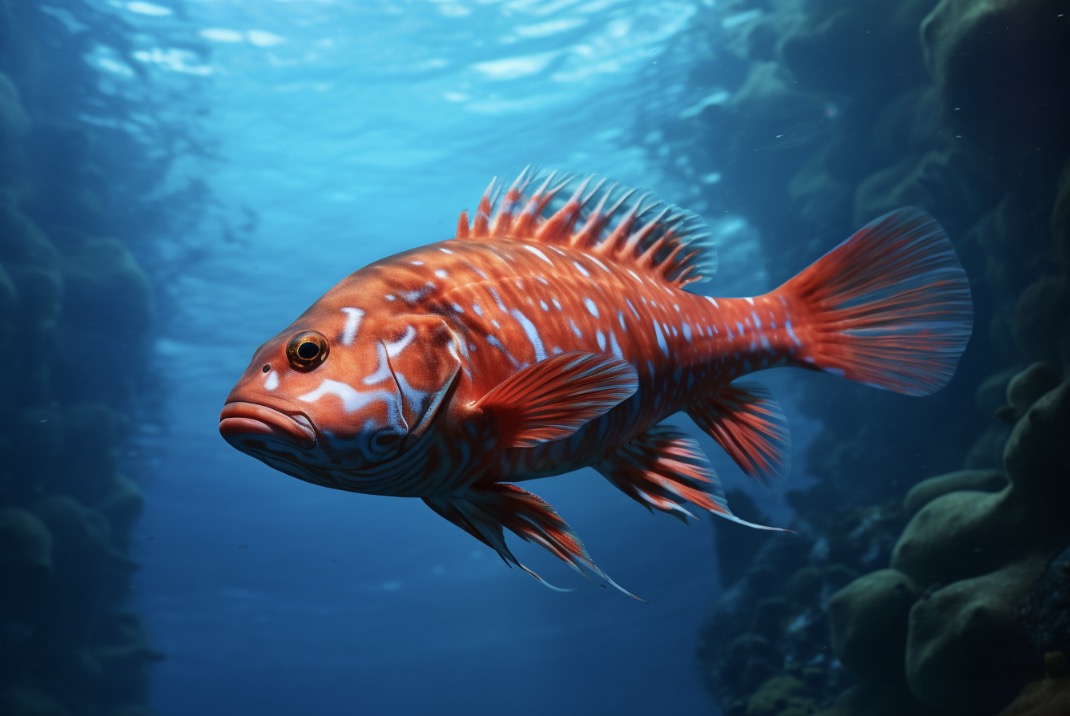Do you ever wonder if fish can sense light? It’s an intriguing question, and one that has been studied extensively by researchers.
Fish are known to be sensitive to the environment around them, but their ability to detect light is still a bit of a mystery.
In this article, we’ll take an in-depth look at how fish interact with light and how it affects their behavior. We’ll explore the different ways in which fish can detect light and discuss how it impacts their day-to-day lives.
We’ll also cover what happens when fish are exposed to too much or too little light and its effects on their health and wellbeing.
Ultimately, we hope this article will help you better understand your underwater friends and provide insight into why they act the way they do in certain environments. With a better understanding of how fish perceive light, you’ll have the knowledge needed to make sure they’re living in a healthy environment that serves them best.
Definition Of Phototactic Behavior
The shimmering, glimmering surface of the lake on a still summer morning is a sight that has captivated humanity for centuries. It’s a moment of serenity and wonder, where our minds can wander and let the beauty of nature slowly wash over us.
But beneath the glassy veneer lies an entire world of activity; from the depths of the murky water to the sunny surface above, all manner of life is scurrying about in search of sustenance and shelter. One such behavior is phototaxis: a response to light that many aquatic species possess.

Phototaxis is typically defined as an organism’s movement towards or away from a source of light. This movement can be either positive (ie they move towards it) or negative (ie they move away from it).
Fish are known to use this behavior to find food sources, avoid predators, and even detect changes in their environment. In essence, phototaxis enables them to make decisions based on their surroundings – decisions that can mean life or death in these unforgiving waters.
Types Of Light Receptors In Fish
As fascinating as it is to observe their behavior, it’s equally important to understand the underlying mechanisms that enable fish to respond to light. To do this, one must look at the types of receptors they possess.
These receptors are located in the eyes and skin and work by detecting changes in light intensity.
The two main types of receptors found in fish are rhodopsins and cryptochromes. Rhodopsin is a type of photopigment that absorbs blue-green wavelengths, while cryptochrome absorbs both blue and ultraviolet light.
These receptors are responsible for helping fish detect even small changes in their environment and act accordingly. As such, they play an integral role in determining how sensitive a fish is to light.
Characteristics Of Light That Impact Fish Sensitivity
It’s clear that a fish’s ability to sense light plays an important role in their behavior. But what are the characteristics of light that affect the sensitivity of these creatures?
To answer this question, let’s look at the case study of an Atlantic cod. This species is highly sensitive to blue-green light, and can detect even small changes in this wavelength.
Moreover, they have been observed responding to changes in light intensity as low as one lux.
This indicates that Atlantic cod are particularly sensitive to blue-green light and its intensity. Other characteristics such as colour temperature, directionality and duration of exposure also play a role in determining how sensitive a fish is to light.
For instance, some species may be more responsive when exposed to short bursts of intense blue-green light than long periods of dim lighting. Similarly, certain species may react differently if exposed from the side rather than from above or below.
Understanding these nuances is key for providing fish with adequate living conditions and ensuring their well-being. With this knowledge, researchers can develop better strategies for conserving and managing aquatic ecosystems by taking into account how different species respond to light exposure.
Common Responses To Light Exposure
Now that we understand the characteristics of light that can affect a fish’s sensitivity, let’s examine some of the common responses that these creatures may have. When exposed to light, fish typically exhibit an increase in activity such as swimming or foraging.
This behavior is especially noticeable in nocturnal species as they’re most active when the lights are off.
In addition to this, an increase in light intensity can also trigger spawning behavior in some species. While this phenomenon has been observed across a variety of freshwater and marine environments, it’s particularly common among coral reef fishes.
This response is closely linked with their reproductive cycle and is often seen at sunrise or sunset when natural light levels start to change.
Understanding these reactions can be extremely useful for aquaculture operations and recreational fishermen who want to maximize their catch rates. By tailoring lighting conditions accordingly, they can take advantage of a fish’s natural behaviors and boost their success rate.
Practical Uses And Applications
With this knowledge in hand, it’s clear that light exposure can be a powerful tool to help us take better care of our aquatic friends. Not only can light offer insight into a fish’s natural behaviors, but it can also provide practical benefits for recreational fishermen and aquaculture operations.
Here are just some of the ways we can use light to improve our interactions with fish:
- For Aquaculture Operations:
- Use light to trigger spawning behavior in fish farms or hatcheries. – Monitor water quality by measuring the intensity and duration of light exposure.
- Adjust lighting conditions to reduce stress levels in captive environments.
- For Recreational Fishermen:
- Utilize sunrise and sunset to increase catch rates in certain areas. – Monitor changes in water temperature using light exposure data.
- Use artificial lighting to attract specific species during night fishing trips.
Ultimately, understanding how fish react to changes in light intensity is key for ensuring their health and wellbeing. Through careful observation and experimentation, we can gain invaluable insights into their natural habitats and develop more effective methods for managing them both on land and at sea.
Conclusion
As we have seen, fish are highly sensitive to light and can display a wide range of behaviors in response. We’ve explored the physiology and biology behind phototactic behavior, as well as various characteristics of light that affect how they respond.
All of this information shows us just how intricate and important light is to fish.
Now, the question remains: what can we do with this knowledge? As it turns out, there are many practical applications for using light to influence fish behavior.
For example, fishermen can take advantage of this knowledge when setting up traps for certain species or fishing at night.
Furthermore, understanding how fish respond to light can help us develop better strategies for protecting their habitats. With all these possibilities at our fingertips, it’s clear that learning about a fish’s sensitivity to light has far-reaching implications for humans and aquatic life alike.




